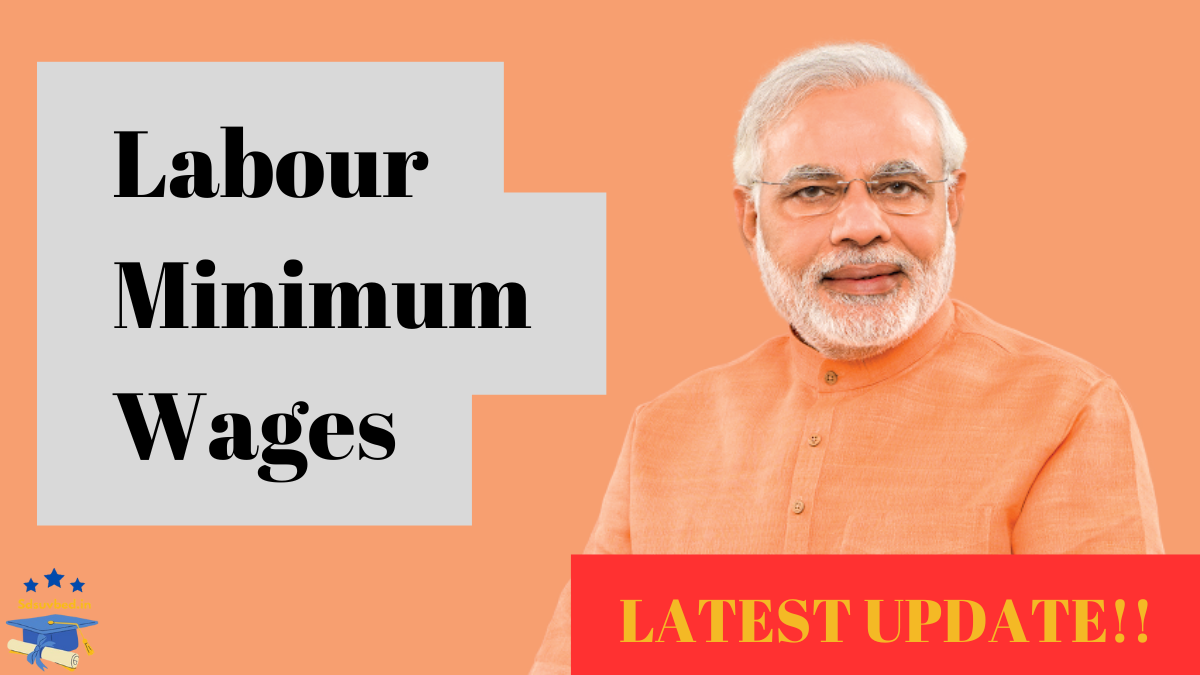The Government of India has implemented new minimum wage rates starting January 1, 2025, a move aimed at uplifting millions of workers across the country. This decision ensures fair wages, protects workers from exploitation, and helps them achieve a better standard of living. The increased wages are expected to not only benefit employees but also contribute positively to the nation’s economy. Let’s dive into the details of the new wage rates and understand their implications for workers and the economy.

What Is Minimum Wage, and Why Is It Important?
Minimum wage refers to the legally mandated lowest wage that an employer must pay their employees. Its primary purpose is to protect workers from exploitation and ensure they earn enough to maintain a decent standard of living.
- Historical Context: The Minimum Wages Act, 1948 was introduced in India to regulate wage rates for different types of laborers and prevent exploitation.
- Economic Impact: By guaranteeing a minimum income, this law ensures that workers can meet basic needs such as food, shelter, and healthcare.
The concept of minimum wages is also linked to social justice, aiming to reduce income inequality and promote economic stability.
What Are the New Minimum Wage Rates for 2025?
The government has revised the wage structure for 2025, considering inflation and the rising cost of living. Here are the new rates:
| Category of Worker | Daily Wage |
|---|---|
| Unskilled Laborer | ₹695 |
| Semi-Skilled Laborer | ₹767 |
| Skilled Laborer | ₹843 |
These rates are applicable in Delhi and may vary slightly across other states. Employers are required to comply with these new rates to ensure fair treatment of workers.
MUST READ: Government Raises Retirement Age to 65 in 2025: Key Details
How Does the New Minimum Wage Benefit Workers?
The updated wage structure brings several advantages to workers:
- Higher Earnings: With increased daily wages, workers can enjoy improved financial stability.
- Protection from Exploitation: The legally mandated wages ensure workers are paid fairly for their labor.
- Better Living Standards: The additional income enables workers to afford basic necessities like nutritious food, housing, and healthcare.
- Boost to Productivity: Fair wages often lead to higher employee morale and productivity, benefiting both workers and employers.
Moving Towards a Living Wage
The concept of a living wage goes beyond minimum wages, aiming to provide workers with enough income to lead a dignified life while meeting basic needs.
- What Is a Living Wage?
A living wage ensures that workers can afford essential expenses such as food, housing, education, and healthcare without financial strain. - Government’s Goal:
By 2025, the Indian government aims to transition from minimum wages to living wages, creating a more equitable and sustainable labor market.
This long-term vision emphasizes not just survival but also the overall well-being of workers and their families.
What Are the Implications of the New Wage Rates?
The increased wage rates have several far-reaching effects:
- Economic Growth: Higher wages lead to increased purchasing power, boosting demand for goods and services.
- Reduced Inequality: Fair wages help bridge the gap between different income groups.
- Workforce Retention: Competitive wages encourage workers to remain in their jobs, reducing turnover rates.
- Compliance Pressure on Employers: Employers must adhere to these new wage rates, ensuring transparency and fairness in the labor market.
While these changes benefit workers, they also require careful implementation and monitoring to ensure compliance.
MUST READ: RBI’s New Rules for CIBIL Score 2025: Updates Every 15 Days
FAQs
What is the new minimum wage rate for unskilled laborers in 2025?
The daily wage for unskilled laborers has been revised to ₹695.
How often are minimum wages updated in India?
Minimum wages are reviewed and updated periodically based on factors such as inflation and the cost of living.
Are the new wage rates the same across all states?
No, the rates may vary slightly from state to state depending on local labor laws and economic conditions.
What is the difference between minimum wage and living wage?
Minimum wage is the legally mandated lowest pay, while living wage is an income level that enables workers to meet all basic needs and live a dignified life.
How does the new minimum wage impact workers?
The revised wages improve financial stability, ensure fair pay, and contribute to better living standards for workers.
What is the penalty for employers not complying with minimum wage laws?
Employers who fail to comply with minimum wage laws can face fines, legal action, and other penalties as prescribed under labor laws.
How can workers ensure they receive the revised wages?
Workers should check their pay slips and report any discrepancies to the labor office or relevant authorities.
Click here to know more.
A passionate content writer specializing in creating engaging, SEO-optimized content. With expertise in blogs, web copy, and storytelling, I craft words that connect with audiences and deliver results.
